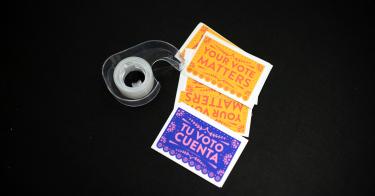The much-vaunted “Latino vote” (pronounced La-TEE-no if you are working for extra credit) is a bit like the Chupacabra. For the uninitiated, that’s a scary creature that comes at night to suck the blood of your goats. It has had many sightings in Spanish-speaking lands, from the Rio Grande Valley to Tierra del Fuego.
It thus has much in common with the “Latino Vote”: It’s fun to fantasize about and discuss with friends, it’s something that Latin Americans supposedly have in common (even some Filipinos believe in it), and it’s used to scare people.
Oh, and they both have one more thing in common: They’re both mythical.
Coronavirus has stopped many things, but it didn’t stop Floridians from voting on St. Patrick’s Day, and there the Latino vote that had sustained Sen. Bernie Sanders in places like Nevada and California just didn’t materialize. In fact, that “Latino vote” went heavily for former Vice President Joe Biden.
It looks, therefore, that Sander’s “Latino” support was therefore more like a “Mexican-American” vote. Even then, it must be caveated further.
Mind you, that vote is not unimportant. Americans of Mexican origin (be it 21st century or 16th century, as New Mexico is replete with voters who can trace their ancestry to Juan de Onate’s expedition across the Rio Grande in 1598) represent some 67 percent of the people the Census Bureau has been identifying as “Hispanic” since 1980.
That’s some 36 million Americans. Pretty soon, Mexican-Americans will overtake German-Americans as the nation’s largest country-of-origin group.
But Florida is a different kettle. The New York Post, which reported on the vote from a more realistic perspective, put it this way: “Latinos were roughly 20 percent of the state’s Democratic voters; 22 percent identified as Cuban, 33 percent as Puerto Rican, and the rest had family ties to other countries. Not only did Biden win Latinos in Florida, he got 65 percent of Puerto Ricans and 56 percent of Cubans.”
That squares with an analysis of heavily Cuban-American precincts in Miami-Dade County conducted by my friend Giancarlo Sopo: 53.2 percent of voters in those districts pulled the lever for Biden; less than 25 percent did so for Sanders.
Sanders’s comments about Fidel Castro’s supposedly great literacy brigades hardly endeared him to Cuban-American voters. But he also didn’t do well among Puerto Ricans.
Another friend, Jorge Bonilla, shared these numbers from Osceola County, a heavily Puerto Rican area in Central Florida. As you can see, voters there voted at a rate of 52.37 percent for Biden and 26.58 percent for Sanders. (It important that in all of these precincts, former New York City Mayor Mike Bloomberg, described in some quarters as a centrist candidate, got double-digit votes, probably through early voting.)
Sanders performed much better with Mexican-American voters in California and Texas. In those two states, respectively, Sanders garnered 49 and 45 percent support of the mostly Mexican-American Latinos, to Biden’s 19 and 24 percent. Mexican-Americans make up 84 percent of the people labeled as Hispanics in California and an even more whopping 87 percent in Texas.
The caveat there is that Sanders’s message of upending the system by setting up “democratic socialism” did better among Californians than among Texans, and better among the young than the old. Puerto Ricans in the Northeast will, likewise, behave very differently from those in Florida.
This is something to think about for those who continue to report excitedly about a “majority-minority” country in the years ahead, and about a “Latino vote.”
The Irish Catholic in Boston voted very differently from the mostly Protestant Scots-Irish of Appalachia, and any political scientist or consultant who would have tried to agglomerate the two would have been treated with the same professional courtesy as a zoologist discussing the mating habits of the chupacabra.
This piece originally appeared in The Federalist




